Find Your Path through the NGSS
Want to print the NGSS Pathfinder as a poster or handout?
Download a printer-friendly PDF. The graphics are licensed under CC BY 4.0, so you’re welcome to use them.
· NGSS Pathfinder without paths
· NGSS Pathfinder with paths
Find your path through the Next Generation Science Standards with help from the Concord Consortium.
- Start in the center with a core idea. What do you teach?
- Add a science and engineering practice—or two!
- Add a crosscutting concept.
- You’ve created one path through the NGSS. Use the Concord Consortium resources available for that path below.
Practices
- Asking Questions
Defining Problems - Using Models
- Conducting
Investigations - Analyzing
Data - Using Mathematics &
Computational Thinking - Constructing Explanations
Designing Solutions - Arguing from
Evidence - Communicating
Information
Core Ideas
What do you teach?
- Life
Sciences - Engineering &
Technology - Earth & Space
Sciences - Physical
Sciences
Crosscutting Concepts
- Patterns
- Causation
- Scale
- Systems
- Energy
- Structure & Function
- Stability & Change
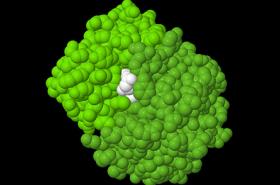 3D Exploration of Bound Antibody and Antigen
3D Exploration of Bound Antibody and Antigen
Explore the role of shape in how antibodies and antigens interact.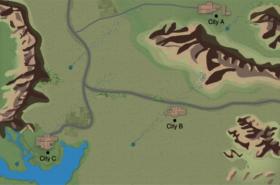 Air Pollution Model (aerial)
Air Pollution Model (aerial)
Explore the connections between point-source pollution, geography, and wind on regional air quality.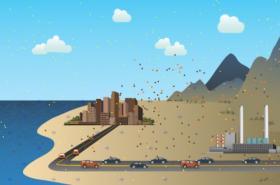 Air Pollution Model (cross-section)
Air Pollution Model (cross-section)
Explore the connections between pollution sources, weather, geography, and air quality.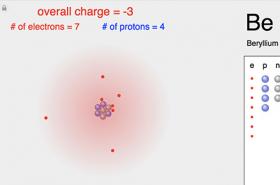 Atom and Ion Builder
Atom and Ion Builder
Create multiple versions of helium atoms and make observations of how changing protons, electrons, and neutrons affect atoms.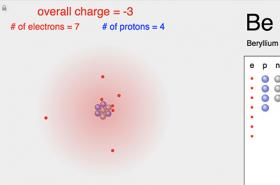 Atom and Ion Builder (with table)
Atom and Ion Builder (with table)
Create multiple versions of various atoms and record the number of protons, electrons, and neutrons in a table.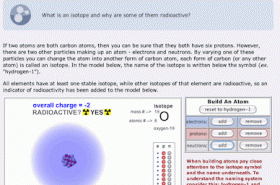 Atomic Structure
Atomic Structure
Explore ion formation, isotopes, and electron orbital placement using interactive models of atomic structure.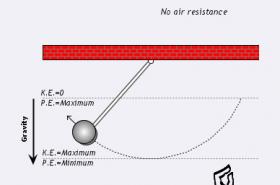 Atoms and Conservation of Energy
Atoms and Conservation of Energy
How does the Law of Conservation of Energy (the First Law of Thermodynamics) apply to atoms?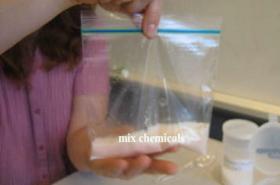 Baggie Chemistry
Baggie Chemistry
Household chemicals mixed in a baggie produce dramatic results.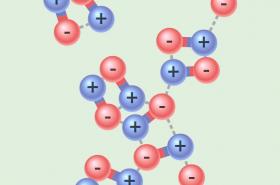 Boiling Point
Boiling Point
This model allows you to explore why polar and non-polar substances have very different boiling points.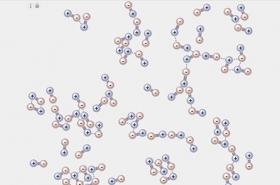 Boiling Point of Polar & Nonpolar Substances
Boiling Point of Polar & Nonpolar Substances
Explore the relationships between properties of molecules, temperature, and movement of particles.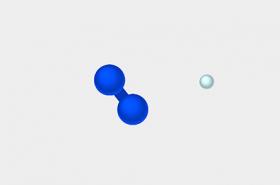 Breaking a Molecular Bond (conceptual version)
Breaking a Molecular Bond (conceptual version)
Adjust the initial velocity of a third atom as it hits two bonded atoms and track the changes in energy during this interaction.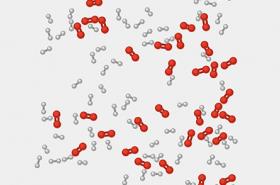 Chain Reaction Between Hydrogen and Oxygen
Chain Reaction Between Hydrogen and Oxygen
Observe how a chemical reaction evolves over time and affects the balance of potential and kinetic energy in the system.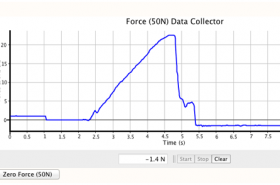 Bridges
Bridges
Design, build, and test a bridge made with file folders to see which design is the strongest.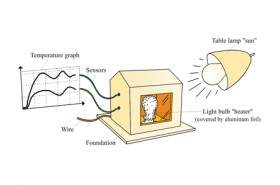 Build and Test a Model Solar House
Build and Test a Model Solar House
Construct and test the energy efficiency and solar heat gain of a cardboard model house.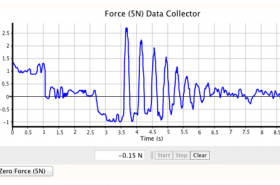 Building a Bungee Jump
Building a Bungee Jump
Build and study a bungee jump that is safe and fun to use.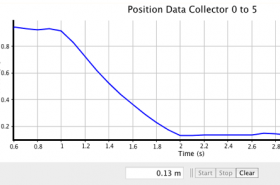 Building a Zip Line
Building a Zip Line
Design, build, and study a zip line that is safe and fun to use.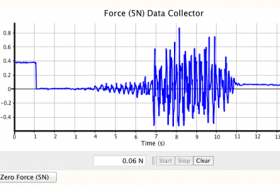 Buildings and Earthquakes
Buildings and Earthquakes
Build model buildings and test them for earthquake resistance using a shake table.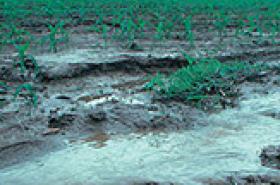 Can We Feed the Growing Population?
Can We Feed the Growing Population?
Explore the interconnected resources that make up our agricultural system as you consider food production.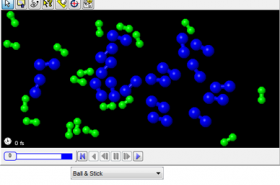 Catalysts
Catalysts
Explore the effects of homogeneous catalysts.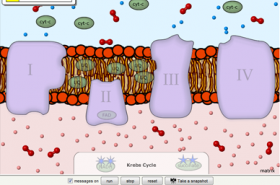 Cellular Respiration
Cellular Respiration
Explore how your body converts the chemical energy of glucose into the chemical energy of ATP.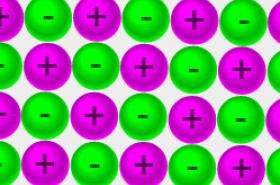 Ceramic Forces
Ceramic Forces
Explore what happens when a force is exerted on a ceramic material.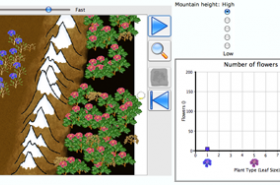 Changes in the Environment
Changes in the Environment
Students learn that different species can arise from a common ancestor if different groups have different selection pressures.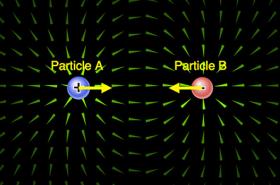 Charge Intensity and Electric Force
Charge Intensity and Electric Force
Explore the relationship between charge, electric fields, and forces on objects by manipulating charge.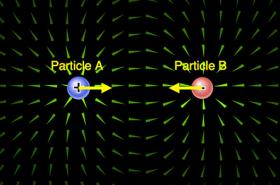 Charge Intensity and Electric Force 2
Charge Intensity and Electric Force 2
Explore the relationship between charge, electric fields, and forces on objects by manipulating charge.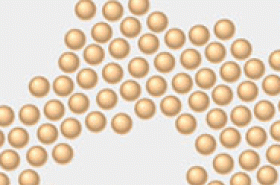 Charged and Neutral Atoms
Charged and Neutral Atoms
Explore the role of charge in interatomic interactions.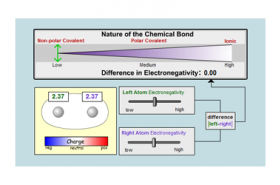 Chemical Bonds
Chemical Bonds
Explore the different kinds of chemical bonds that can form, ranging from non-polar covalent to ionic.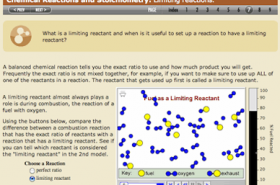 Chemical Reactions and Stoichiometry
Chemical Reactions and Stoichiometry
Control the concentrations of molecules and temperatures of reactions to explore reaction rate, and learn to balance chemical equations. Clouds
Clouds
Why are there clouds? Explore the water cycle.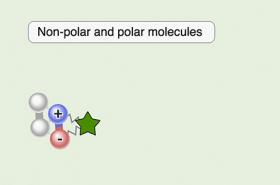 Comparing Attractive Forces Between Molecules
Comparing Attractive Forces Between Molecules
Explore the difference in attractive forces between polar and nonpolar molecules.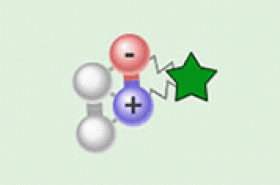 Comparing Dipole-Dipole to London Dispersion
Comparing Dipole-Dipole to London Dispersion
Investigate the difference in the attractive force between polar and non-polar molecules.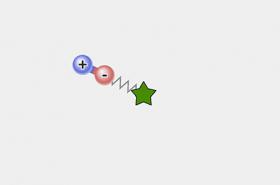 Comparing Potential Energy of a Bond
Comparing Potential Energy of a Bond
Compare the change in potential energy when you separate molecules from each versus when you break molecules apart.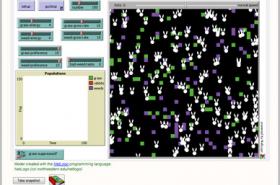 Competition
Competition
Use a model to study the effect of a consumer (rabbits) on two species of producers (grass and weeds).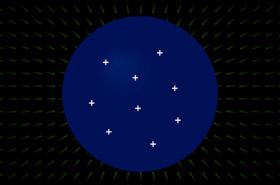 Concentrating Charge and Electric Fields
Concentrating Charge and Electric Fields
Simulate an analogy to Rutherford’s gold foil experiment to distinguish between the plum pudding and hard nucleus model of the atom.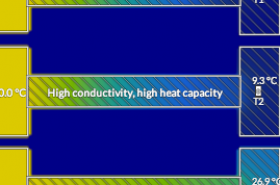 Conduction: Combine Heat Capacity and Conductivity
Conduction: Combine Heat Capacity and Conductivity
This model shows the combined effects of heat capacity and conductivity.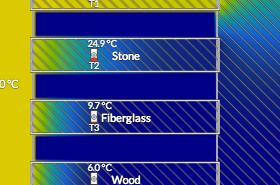 Conduction: Heat Conduction Through Materials
Conduction: Heat Conduction Through Materials
Observe the rate of heat flow through materials with different conductivities.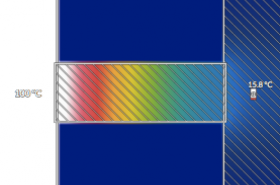 Conduction: The Effect of Temperature Difference
Conduction: The Effect of Temperature Difference
Observe the effect of temperature difference on the flow of heat.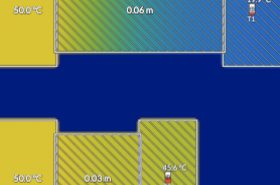 Conduction: The Effect of Wall Thickness on Heat Conduction
Conduction: The Effect of Wall Thickness on Heat Conduction
Compare the flow of heat through different thicknesses of material.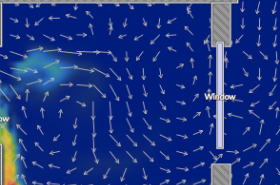 Convection: Blowing Wind
Convection: Blowing Wind
Observe the motion of air around and through a building when the wind is blowing.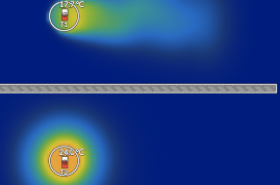 Convection: Forced Convection
Convection: Forced Convection
Observe how forced convection can change an object’s surface temperature and cool it down rapidly.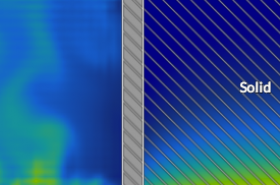 Convection: Natural Convection
Convection: Natural Convection
This model illustrates the difference between conduction and convection in the transfer of heat.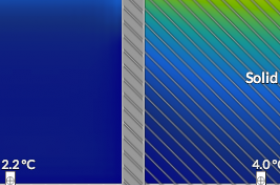 Convection: Natural Convection Inverted
Convection: Natural Convection Inverted
This model shows how convection works when the heat source is at the top of a space rather than at the bottom.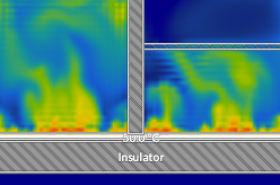 Convection: Slow Down Convection
Convection: Slow Down Convection
This model explores how natural convection can be reduced with barriers.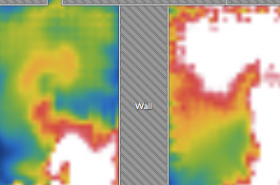 Convection: The Stack Effect
Convection: The Stack Effect
Observe the effect of leaks in the walls and roof on the air circulation in a heated house.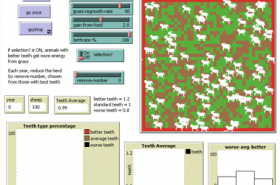 Conflicting Selection Pressures
Conflicting Selection Pressures
Observe how heredity and natural selection allow a population to adapt to a changing environment.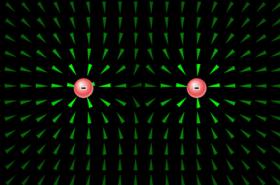 Conversion of Electric Potential Energy
Conversion of Electric Potential Energy
Explore how potential energy created by particles of varying charge is converted to thermal energy.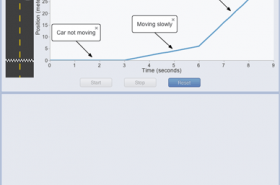 Describing Velocity
Describing Velocity
Learn about velocity-time graphs and their connection to corresponding position-time graphs, and determine velocity during different intervals.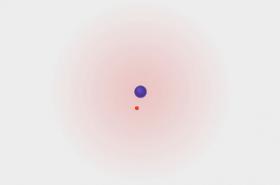 Deformed Electron Cloud
Deformed Electron Cloud
Explore the effect of an electric field on the electron distribution of an atom. Dew Point
Dew Point
Figure out the dew point temperature for your classroom.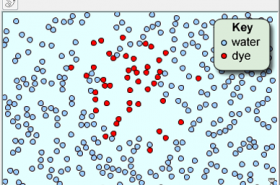 Diffusion
Diffusion
Investigate how the random motion and collisions of particles results in diffusion.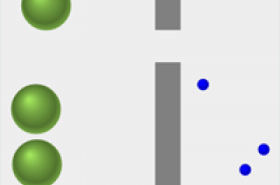 Diffusion Across a Semipermeable Membrane
Diffusion Across a Semipermeable Membrane
Explore the role of pore size in the diffusion of a substance across a membrane.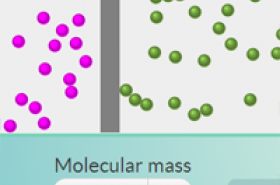 Diffusion and Molecular Mass
Diffusion and Molecular Mass
Explore the role of a molecule’s mass with respect to its diffusion rate.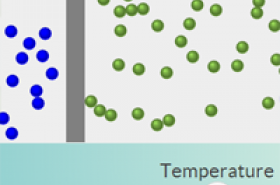 Diffusion and Temperature
Diffusion and Temperature
Explore the role of temperature in the rate of diffusion of a substance.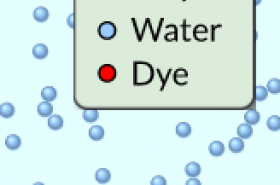 Diffusion of a Drop
Diffusion of a Drop
Explore the random molecular motion of a dye in water.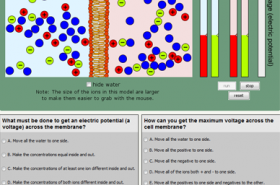 Diffusion, Osmosis and Active Transport
Diffusion, Osmosis and Active Transport
Explore how water and ions can diffuse both passively and actively through cell membranes.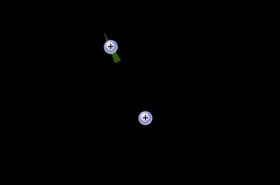 Direction and Strength of Force in Electric Fields
Direction and Strength of Force in Electric Fields
Explore the strength and direction of forces between two charged objects by observing the color and direction of the force pointers.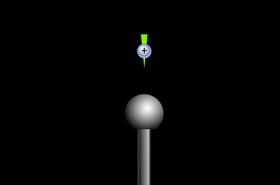 Direction of Force Around a VDG (Negatively Charged)
Direction of Force Around a VDG (Negatively Charged)
Observe the direction of forces between a negatively charged Van de Graaff generator and a positively charged object.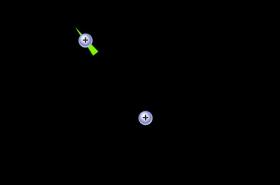 Direction of Force on Charged Objects
Direction of Force on Charged Objects
Drag around a stationary charged object and observe the force on the stationary object when it is positive and negative.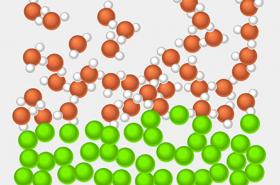 Dissolving
Dissolving
Observe the impact on potential energy when a substance dissolves in water.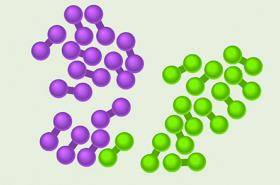 Dissolving Experimental
Dissolving Experimental
Explore how the polarity of molecules affects how they mix (or don’t) when combined.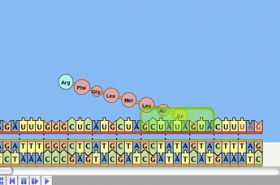 DNA to Protein
DNA to Protein
Explore what DNA is and how proteins are synthesized from the genetic information stored in it.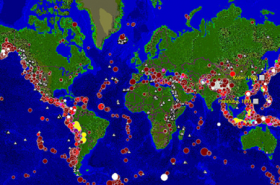 Earthquakes Around the World
Earthquakes Around the World
In this activity you will use a computer model to investigate earthquakes and volcanic eruptions.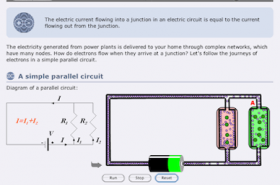 Electric Current
Electric Current
Explore the relationships between voltage, current, and resistance that make up Ohm’s Law using molecular models of circuits.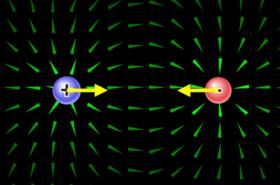 Electric Potential Energy and Charge Intensity
Electric Potential Energy and Charge Intensity
Set the amount and type of charge on particles and compare the potential energy of the electric field that is generated.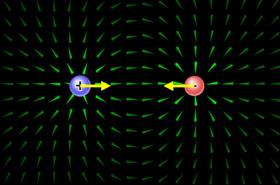 Electric Potential Energy and Type of Charge
Electric Potential Energy and Type of Charge
Set the charge of two particles and compare the potential energy of the electric field they generate as the particles are moved around.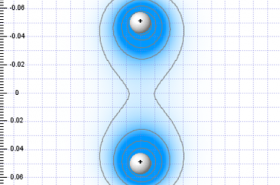 Electrons in Atoms and Molecules
Electrons in Atoms and Molecules
The interactions of electrons with matter are central to many technologies from transistors to sophisticated quantum computing.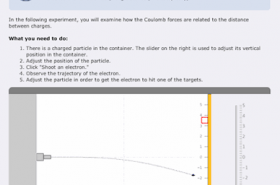 Electrostatics
Electrostatics
Discover how atoms can be charged, and manipulate charge and distance to examine Coulomb’s Law.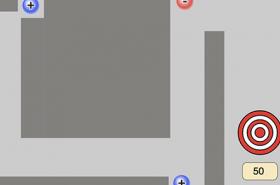 Electrostatics: Maze Game
Electrostatics: Maze Game
Apply knowledge of the interactions between charged particles to guide an object through a maze.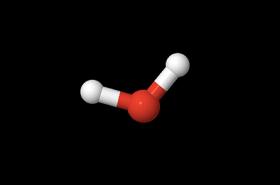 Elements and Polarity
Elements and Polarity
Compare the surface charges on various molecules and explore which atom types tend to cause uneven sharing of electrons.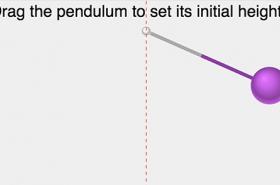 Energy of a Pendulum
Energy of a Pendulum
Set the initial height of a pendulum and observe how potential, kinetic, and thermal energy change during pendulum swings.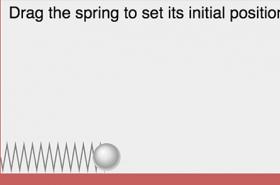 Energy of a Spring
Energy of a Spring
Set the initial position of a mass on a spring and observe how potential, kinetic, and thermal energy change when the spring is released.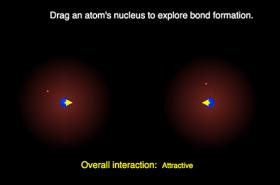 Energy of Bond Formation (conceptual version)
Energy of Bond Formation (conceptual version)
Explore how different elements come together to form bonds and compare changes in potential energy and forces.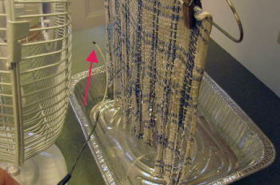 Evaporative Cooler
Evaporative Cooler
How can the cooling effect of evaporating water be used for air conditioning?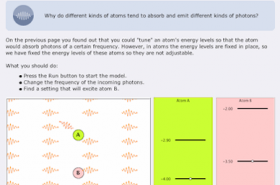 Excited States and Photons
Excited States and Photons
Investigate how atoms can be excited to give off radiation.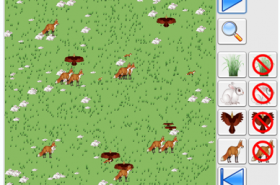 Experiment with Ecosystems
Experiment with Ecosystems
Experiment with virtual ecosystems and test your hypotheses about producer/consumer and predator/prey relationships.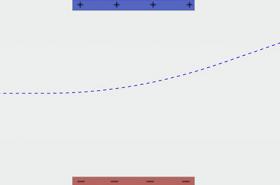 Exploring Electron Properties
Exploring Electron Properties
Compare the behavior of charged atoms and cathode ray particles (electrons).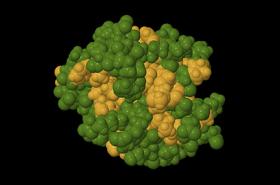 Exploring Hydrophobic Core
Exploring Hydrophobic Core
Explore the structure of various proteins and see how the nonpolar amino acids form the core of many protein structures.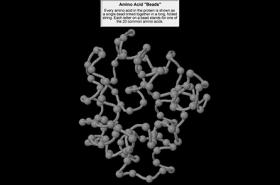 Exploring Protein 3D Structure
Exploring Protein 3D Structure
Explore a protein and its components using a simplified representation to see structure; or a view of all atoms to see full details.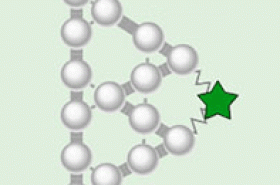 Factors Affecting London Dispersion Attractions
Factors Affecting London Dispersion Attractions
Explore the role of size and shape in the strength of London dispersion attractions.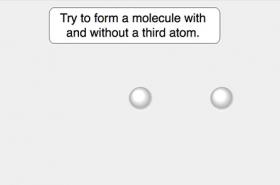 Forming a Molecular Bond (conceptual version)
Forming a Molecular Bond (conceptual version)
Explore the potential and kinetic energy as two atoms form a covalent bond.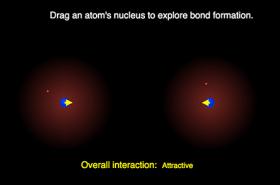 Forming a Molecule
Forming a Molecule
Explore the balance of forces and electron distribution as two atoms are moved closer and further apart.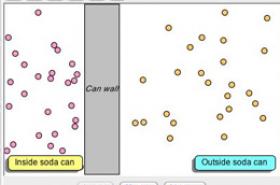 Gas Laws
Gas Laws
Explore the interrelationships of pressure, temperature, and volume with atomic models.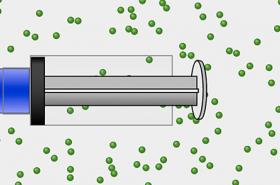 Gas Pressure in a Syringe
Gas Pressure in a Syringe
Explore how a particle model of gases works to predict the behavior of a syringe under various conditions.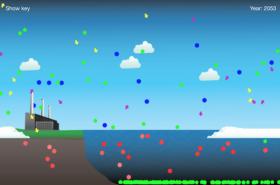 Global Climate Change Model: Making Predictions About Future Climate
Global Climate Change Model: Making Predictions About Future Climate
Explore how changing human emissions may affect Earth’s temperature in the future.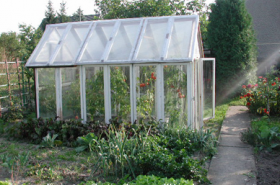 Greenhouse Effect in a Greenhouse
Greenhouse Effect in a Greenhouse
Relate changes in sunlight to the temperature of air trapped in a container.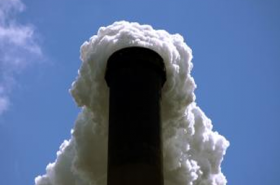 Greenhouse Gases
Greenhouse Gases
Use a computer model to explore how the earth’s atmosphere affects the energy balance between incoming and outgoing radiation. Greenhouse Light and Temperature
Greenhouse Light and Temperature
By using a temperature sensor, we can relate changes in sunlight to the temperature of the air being trapped in a container.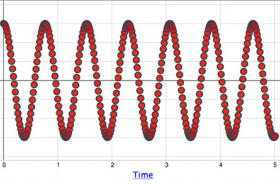 Hands-On Experiment with Sensor Data Collection
Hands-On Experiment with Sensor Data Collection
Design and run your own hands-on experiment using a sensor. Analyze results in CODAP. Hands-On Experiment with Dual Sensor Data Collection
Hands-On Experiment with Dual Sensor Data Collection
Use two sensors to design and run your own hands-on experiment. Analyze results in CODAP. Heat and Light from Electricity
Heat and Light from Electricity
How does energy change from one form to another?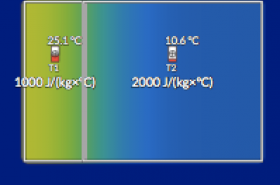 Heat Storage Depends on Size
Heat Storage Depends on Size
Measure how size affects the flow of heat energy from a warm to a cold object.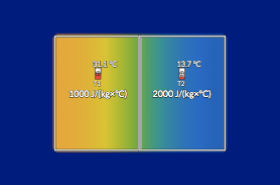 Heat Storage Depends on Specific Heat
Heat Storage Depends on Specific Heat
Measure how specific heat affects the flow of heat energy from a warm to a cold object.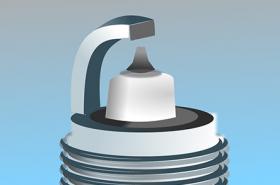 How Can a Small Spark Start a Huge Explosion?
How Can a Small Spark Start a Huge Explosion?
Explore connections between electric forces and molecules using simulations, and explain energy transfers using the conservation of energy.
 How Does an Object Become Charged?
How Does an Object Become Charged?
Develop atomic-level causal models to explain observations of electrostatic interactions.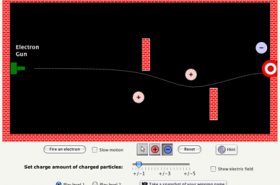 How Electrons Move
How Electrons Move
Discover the forces affecting the movement of electrons, including electric and magnetic fields.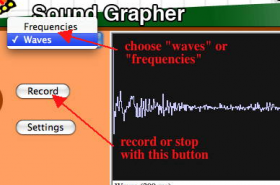 How Loud, How High?
How Loud, How High?
Explore the frequency, wavelength, amplitude and velocity of sound waves.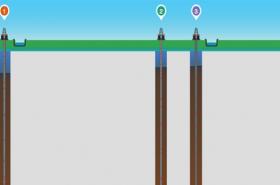 Hydraulic Fracturing Model
Hydraulic Fracturing Model
Explore how hydraulic fracturing is used to extract oil and natural gas and how the process may affect local aquifers.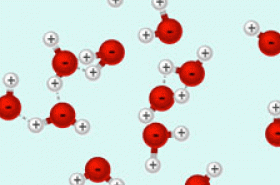 Hydrogen Bonds: A Special Type of Attraction
Hydrogen Bonds: A Special Type of Attraction
Explore the polar molecule interactions known as hydrogen bonds.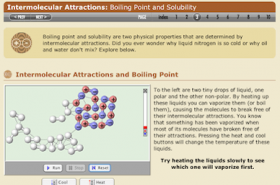 Intermolecular Attractions
Intermolecular Attractions
Explore how London dispersion attraction and dipole-dipole interactions explain the different boiling points of materials.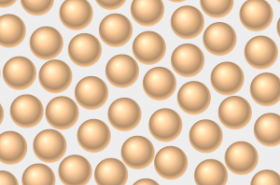 Intermolecular Attractions and States of Matter
Intermolecular Attractions and States of Matter
Explore how states of matter are related to the strength of intermolecular attractions.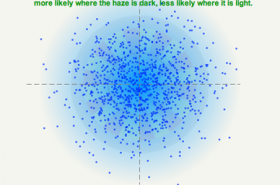 Introduction to Quantum Mechanics
Introduction to Quantum Mechanics
Discover the quantum nature of electrons including their wave nature, tunneling abilities, and their bound and excited states.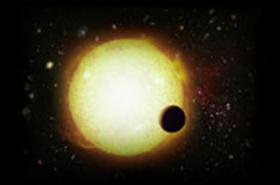 Is There Life in Space?
Is There Life in Space?
Explore the question: Can there be life outside of Earth?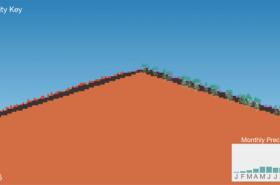 Land Management Model
Land Management Model
Explore the effects of different land management strategies, terrain, and climate on erosion rate and soil quality.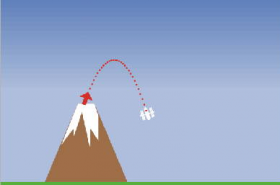 Launching a Satellite
Launching a Satellite
Study how to fire something into space.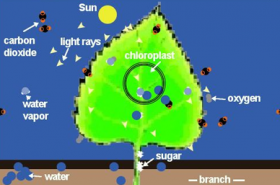 Leaf Photosynthesis
Leaf Photosynthesis
This NetLogo model of leaf photosynthesis shows the macroscopic outcome of the reaction.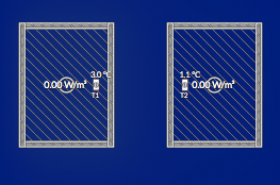 Maintaining Steady Temperature
Maintaining Steady Temperature
Explore how temperature swings in a house can be moderated.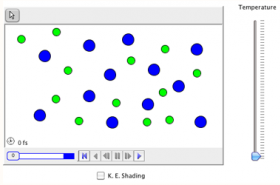 Making and Breaking Bonds
Making and Breaking Bonds
Explore the association and dissociation of diatomic molecules.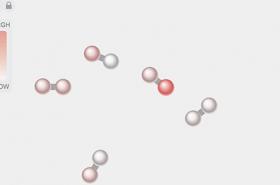 Making and Breaking Bonds: The Effect of Temperature
Making and Breaking Bonds: The Effect of Temperature
Observe the effects of temperature on chemical reactions.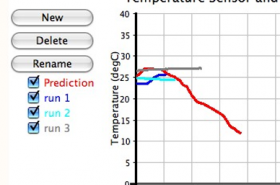 Making Heat
Making Heat
Does change in concentration change the amount of heat released in a chemical reaction?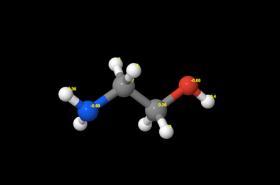 Making Molecules
Making Molecules
Modify an existing molecule and observe how different atoms affect the electron distribution within the model.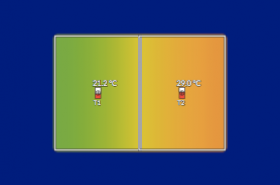 Measuring Heat Transfer
Measuring Heat Transfer
Observe and measure the flow of heat energy from a warm to a cold object.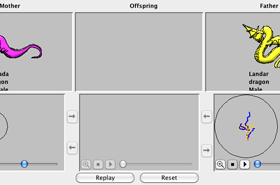 Meiosis
Meiosis
Learn how meiosis and fertilization shuffle the alleles that offspring inherit.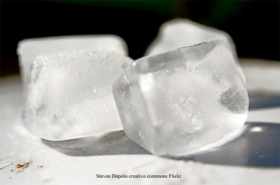 Melting Ice
Melting Ice
What is the temperature of ice as it melts?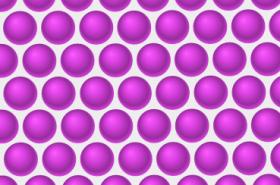 Metal Forces
Metal Forces
Explore what happens when a force is exerted on a metallic material.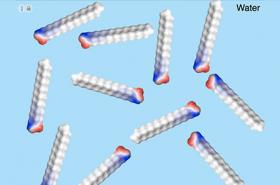 Micelles
Micelles
Observe changes in potential energy as molecules self-assemble into micelles.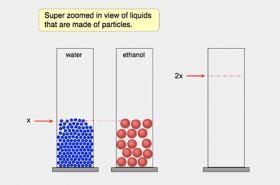 Mixing Liquids
Mixing Liquids
Explore how mixing two different liquids together can result in less total volume by investigating at the molecular level.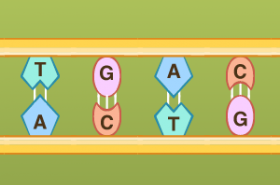 Modeling Transcription
Modeling Transcription
Explore how an mRNA copy is made of DNA.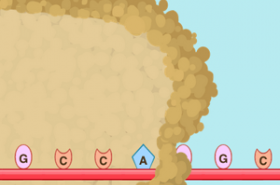 Modeling Translation
Modeling Translation
Explore how a protein is made from an mRNA sequence.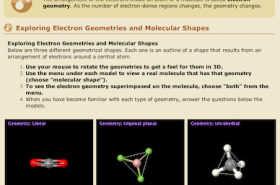 Molecular Geometry
Molecular Geometry
Use models of electron arrangement around atoms to discover how molecules form linear, trigonal planar, and trigonal pyramidal shapes.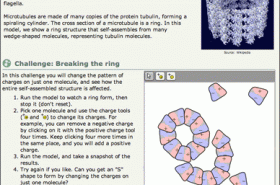 Molecular Self-Assembly
Molecular Self-Assembly
Explore how molecules assemble themselves into defined patterns, a process called molecular self-assembly.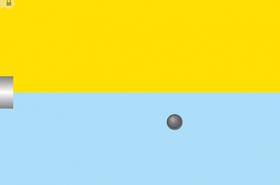 Molecular Sorting
Molecular Sorting
Add various unknown molecules to oil and water, and observe how the molecules sort themselves in response to interactions with the surrounding environment.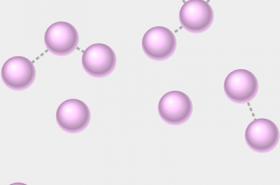 Molecular View of a Gas
Molecular View of a Gas
Explore the structure of a gas at the molecular level.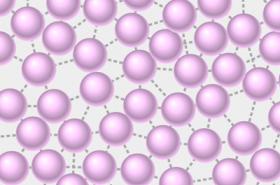 Molecular View of a Liquid
Molecular View of a Liquid
xplore the structure of a liquid at the molecular level.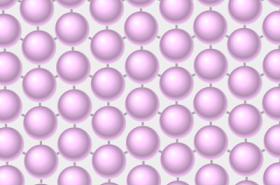 Molecular View of a Solid
Molecular View of a Solid
Explore the structure of a solid at the molecular level. Motion on a Ramp
Motion on a Ramp
Study the motion of an object as it moves up and down a ramp.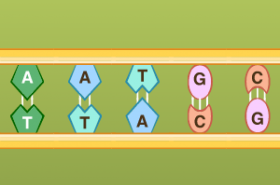 Mutations
Mutations
Explore how changing the DNA sequence can change the amino acid sequence of a protein.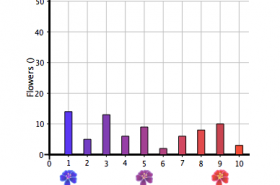 Mystery Plant Adaptation
Mystery Plant Adaptation
Learn that species are adapted to their environments. Variation in a species can help the species adapt to changes in the environment.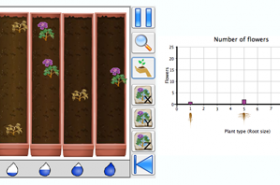 Mystery Plants Mystery
Mystery Plants Mystery
Learn about intraspecific differences and how variation in a population can help a species adapt to living in different environments.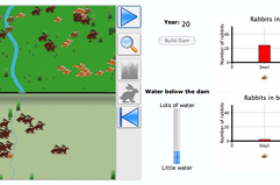 Natural Selection
Natural Selection
Students explore how changes in the environment affect both plants and animals in a simple ecosystem.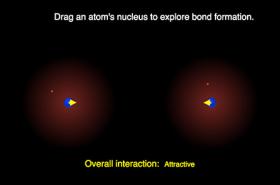 Non-Bonding (conceptual version)
Non-Bonding (conceptual version)
Compare the electron distribution, potential energy, and forces of two interacting hydrogen atoms (which can bond) with two helium atoms (which do not).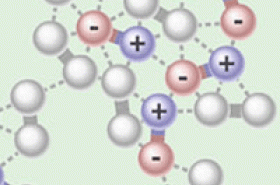 Oil and Water
Oil and Water
Explore the interactions that cause water and oil to separate from a mixture.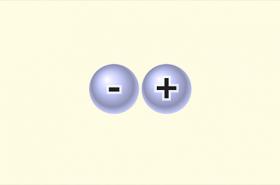 Opposites Attract
Opposites Attract
Change the charge on spheres to positive or negative and observe how charges affect the interaction between them.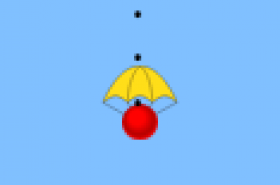 Parachute and Terminal Velocity
Parachute and Terminal Velocity
Explore the factors that affect an object’s speed as it falls through the atmosphere.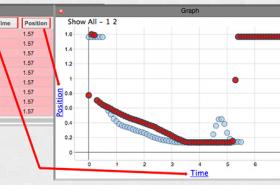 Parachute Experiment
Parachute Experiment
Measure the terminal velocity of a falling parachute using coffee filters and a motion sensor.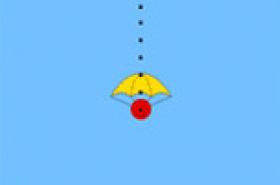 Parachute Model
Parachute Model
Measure the terminal velocity of a virtual falling parachute and analyze data in CODAP.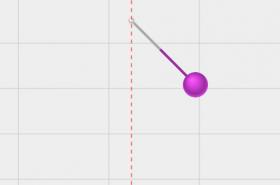 Pendulum
Pendulum
Explore the factors that affect a pendulum’s motion. Pendulum and Spring
Pendulum and Spring
Explore the motion of a pendulum suspended by a spring.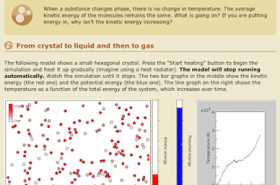 Phase Change
Phase Change
Explore what happens at a molecular level as substances change phase.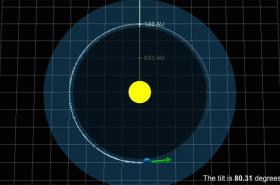 Planet Hunting Model
Planet Hunting Model
Explore how a star’s movement and light intensity are affected by an orbiting planet, and the characteristics of stars and planets important to habitability potential.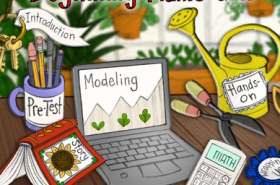 Plants
Plants
What do plants eat? This unit explores plants and how they make food.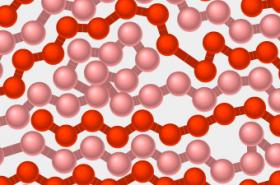 Plastic Forces
Plastic Forces
Explore what happens when a force is exerted on a polymeric plastic material.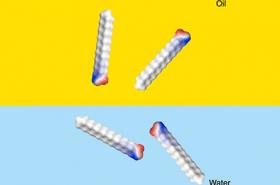 Polar and Nonpolar Interface
Polar and Nonpolar Interface
Observe how molecules with hydrophilic and hydrophobic regions move in a mixture of oil and water, and the effects on potential energy.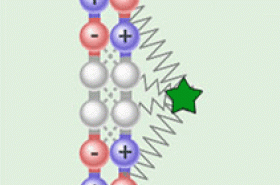 Polarity and Attractive Strength
Polarity and Attractive Strength
Explore the role of polarity in the strength of intermolecular attractions.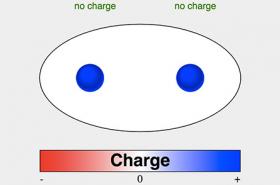 Polarization
Polarization
Explore how the types of atoms forming a bond affect the distribution of electrons and overall shape of the molecule.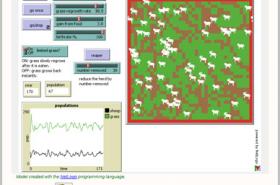 Population Explosion
Population Explosion
Study how populations stay in balance with their environment and respond to various factors such as food supply and predators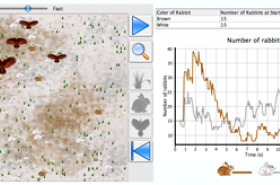 Predators and Prey
Predators and Prey
Students learn that selection pressure can lead to a change in the characteristics of a population.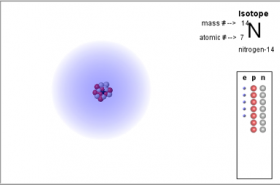 Probability Clouds
Probability Clouds
Investigate the probability map of electron orbitals.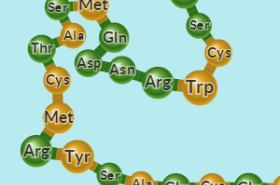 Protein Folding
Protein Folding
Explore how hydrophobic and hydrophilic interactions cause proteins to fold into specific shapes.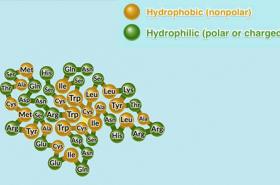 Protein Folding Exploring
Protein Folding Exploring
Generate proteins with different molecular properties and observe how their folding changes the potential energy of the system.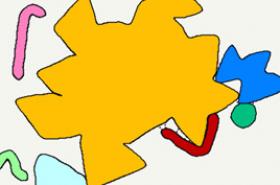 Protein Partnering and Function
Protein Partnering and Function
Build “partnerships” between a protein and small molecules and explore the effects of surface charge, polarity, and shape on partnering.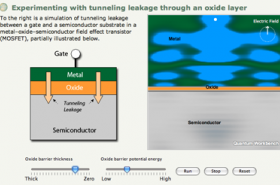 Quantum Tunneling
Quantum Tunneling
Explore the unique concept of quantum tunneling and its importance to modern technology.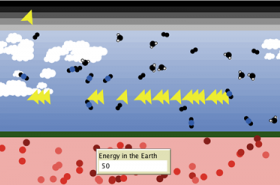 Radiant Energy Flow
Radiant Energy Flow
Explore the energy balance between incoming and outgoing radiation on the earth.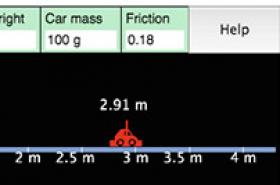 Ramp Game
Ramp Game
Race a virtual car down a ramp, create graphs and analyze data in CODAP (Common Online Data Analysis Platform).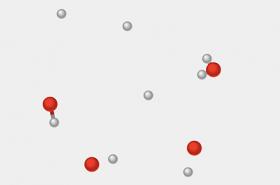 Reaction Between Hydrogen and Oxygen Atoms
Reaction Between Hydrogen and Oxygen Atoms
Observe a reaction between hydrogen and oxygen atoms, and watch how potential and kinetic energy change.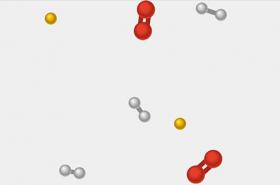 Reaction Between Hydrogen and Oxygen Molecules
Reaction Between Hydrogen and Oxygen Molecules
Carefully observe changes in kinetic and potential energy as hydrogen and oxygen molecules react.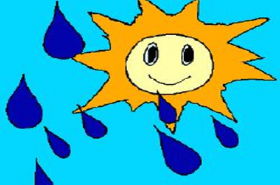 Relative Humidity Measurement
Relative Humidity Measurement
Measure relative humidity in the air by comparing the wet bulb and dry bulb temperatures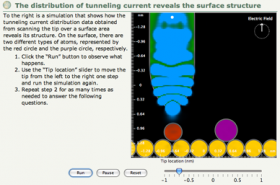 Scanning Tunneling Microscopy
Scanning Tunneling Microscopy
Use a virtual scanning tunneling microscope to explore the quantum tunneling effect.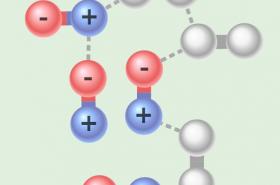 Seeing Intermolecular Attractions
Seeing Intermolecular Attractions
Explore different types of attractions between molecules.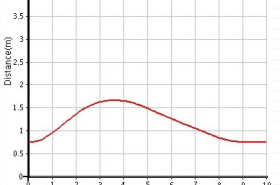 Seeing Motion
Seeing Motion
Investigate simple, straight-line motion.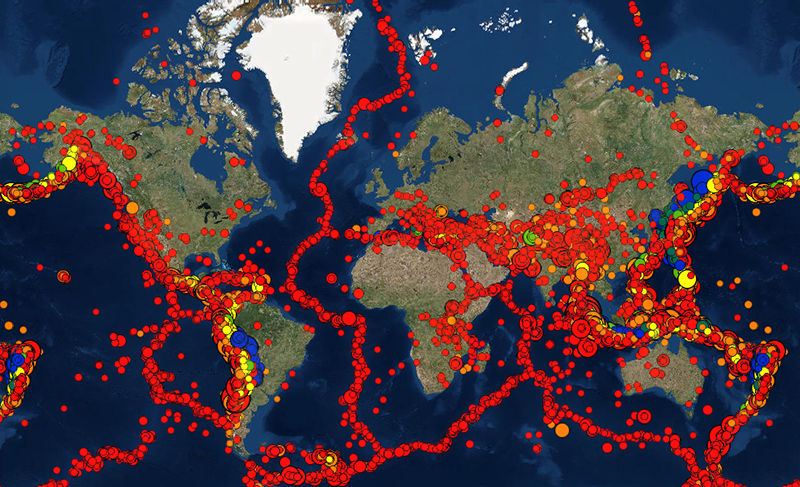 Seismic Explorer
Seismic Explorer
This model allows you to explore the pattern of earthquakes on Earth, including magnitude, depth, location, and frequency.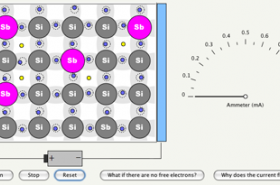 Semiconductors
Semiconductors
Explore the structure and behavior of natural and doped semiconductors.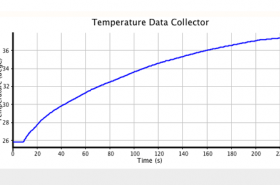 Solar Oven
Solar Oven
Design, build, and test a solar oven.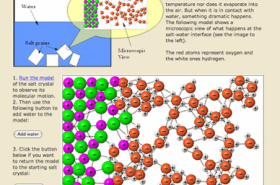 Solubility
Solubility
Explore molecular views of solvents and solutes to explain how substances dissolve.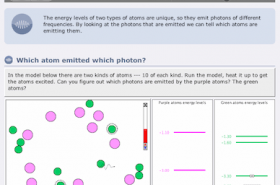 Spectroscopy
Spectroscopy
Explore why excited atoms emit different wavelengths of radiation and learn how to identify atoms based on their unique atomic spectra. Spring Model
Spring Model
Explore the factors that affect a spring’s motion.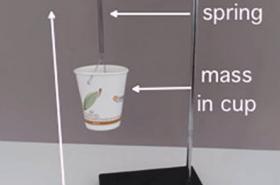 Spring and Mass Experiment
Spring and Mass Experiment
Explore mass as an independent variable in a hands-on experiment with a spring-mass system.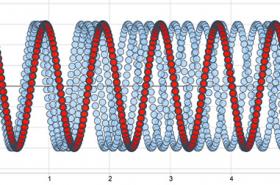 Spring and Mass Model
Spring and Mass Model
Explore the motion of a mass hanging on a spring and how the amount of mass affects the period.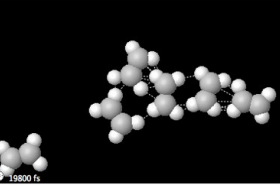 States of Matter
States of Matter
How do the forces and attractions differ between the states of matter?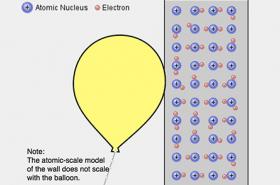 Sticking a Balloon to a Wall
Sticking a Balloon to a Wall
Explore the interactions between a charged balloon and a neutral wall at the atomic-level.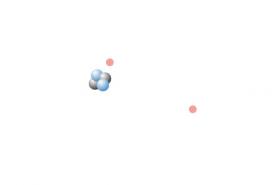 Structure of an Atom
Structure of an Atom
Map the probable locations of electrons around a nucleus to understand probability distributions and the electron cloud model.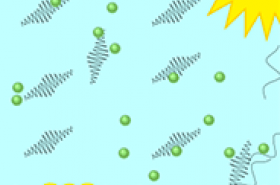 Sunlight, Infrared, CO2 and the Ground
Sunlight, Infrared, CO2 and the Ground
Explore how solar radiation interacts with Earth’s surface and atmosphere.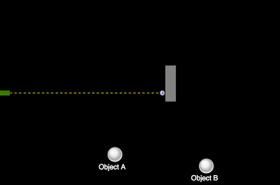 Target Game (Charge Magnitude / Force Relationship)
Target Game (Charge Magnitude / Force Relationship)
Manipulate the magnitude of charges on two objects to get a third positively charged particle to hit a target.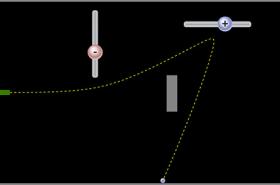 Target Game (Distance/Force Relationship)
Target Game (Distance/Force Relationship)
Drag the location of charges to get a positively charged particle to the target while observing forces and fields.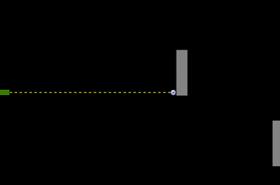 Target Game (Free Play)
Target Game (Free Play)
Manipulate the location and magnitude of charges to get a positively charged particle to hit a target.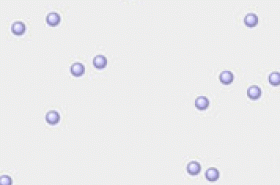 The Temperature-Pressure Relationship
The Temperature-Pressure Relationship
Explore the relationship between the temperature of a gas and the pressure it exerts on its container.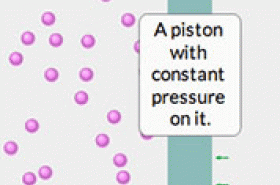 The Temperature-Volume Relationship
The Temperature-Volume Relationship
Explore the relationship between the temperature of a gas and its volume.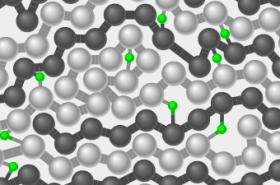 Tire Forces
Tire Forces
Explore what happens when a force is exerted on a rubber tire.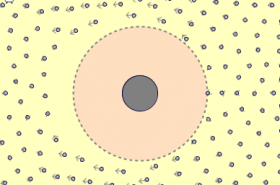 Transistors: The Field Effect
Transistors: The Field Effect
The field effect transistor is the most common type of transistor.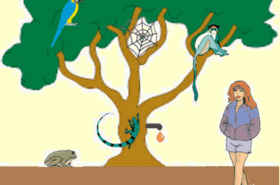 Tree of Life
Tree of Life
Zoom down from what we can see with our own eyes to the macromolecules from which they are made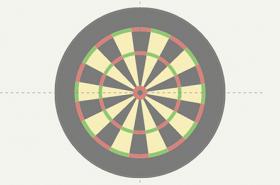 Understanding Probability Maps
Understanding Probability Maps
Use a dart board simulation to understand probability distributions. Van de Graaff (VDG) Discharge
Van de Graaff (VDG) Discharge
Explore how the charging and discharging of a Van de Graaff generator occurs and changes in potential energy.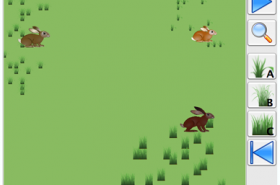 Variations and Adaptations
Variations and Adaptations
Students determine how climate can affect ecosystems.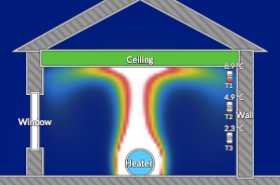 Vertical Temperature Gradients
Vertical Temperature Gradients
Explore the vertical temperature variations in a house due to natural convection.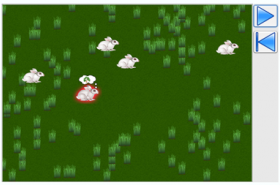 The Virtual Ecosystem
The Virtual Ecosystem
Students learn that organisms with similar needs compete with one another for resources.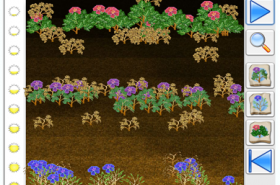 The Virtual Field
The Virtual Field
Learn the life cycle of organisms, variation within a species, and heritability of traits.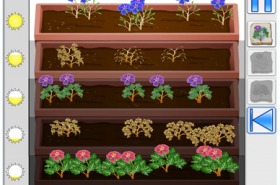 The Virtual Greenhouse
The Virtual Greenhouse
Students learn about basic needs of organisms. An organism thrives in specific environments that match its specific needs.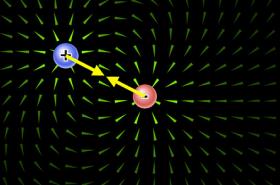 Visualizing Electric Fields and Forces
Visualizing Electric Fields and Forces
Model how electric fields change due to the number and placement of charged objects.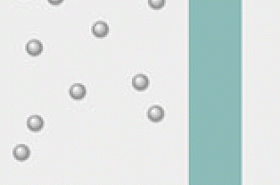 The Volume-Pressure Relationship
The Volume-Pressure Relationship
Investigate the relationship between the volume of a gas and the pressure it exerts on its container.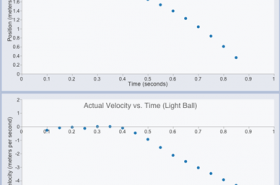 Was Galileo Right?
Was Galileo Right?
Explore the effect of gravity on objects of various mass during free fall.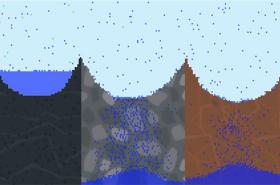 Water Model
Water Model
Explore how water moves through Earth’s layers and determine if wells can produce sustainable amounts of water while maintaining the underlying aquifer’s health.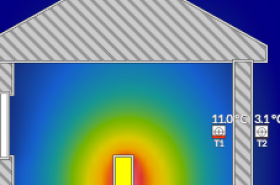 Well and Poorly Insulated Houses
Well and Poorly Insulated Houses
Compare the heating of two houses with different insulation values.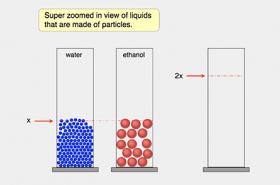 What Are All Materials Made of?
What Are All Materials Made of?
Evaluate particle nature of matter and use particle nature of matter to explain observations of liquids and gasses.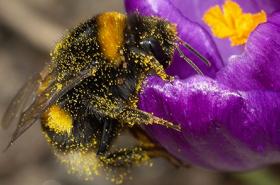 What Are Factors that Affect the Interactions Between Objects?
What Are Factors that Affect the Interactions Between Objects?
Explore and use models of electric fields to explain how charged objects interact with other objects.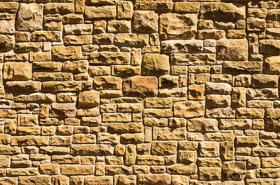 What Are Nature’s Building Blocks?
What Are Nature’s Building Blocks?
Develop, revise, and interpret representations of atomic structure and interactions of charges within atoms.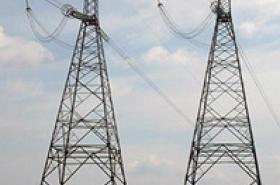 What Are Our Energy Choices?
What Are Our Energy Choices?
Explore the advantages and disadvantages of using renewable and non-renewable sources to generate electricity.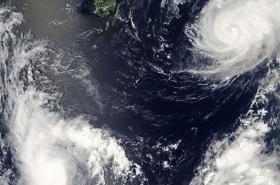 What Happens to the Energy of Water Molecules During Hurricanes?
What Happens to the Energy of Water Molecules During Hurricanes?
Add energy to a model of how molecules interact by exploring phase changes of water.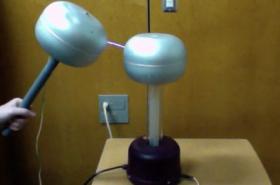 What Is Happening When a Spark Occurs?
What Is Happening When a Spark Occurs?
Students define potential and kinetic energy, explore energy transfer and energy conservation, and connect energy to atomic structure.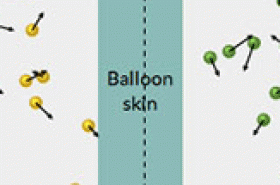 What Is Pressure?
What Is Pressure?
Explore pressure at the atomic level.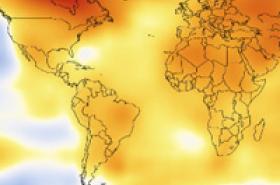 What Is the Future of Earth’s Climate?
What Is the Future of Earth’s Climate?
Examine climate data and models to predict Earth’s future climate.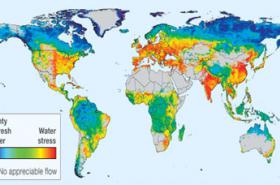 What Makes Water Special?
What Makes Water Special?
Develop explanations connecting observations of water with properties that water exhibits.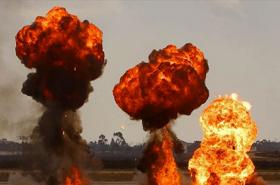 Where Does All the Energy in an Explosion Come From?
Where Does All the Energy in an Explosion Come From?
Construct a model of chemical reactions involving energy and electrostatic interactions and compare reactions and changes in energy. Where Does the Energy of a Spark Come From?
Where Does the Energy of a Spark Come From?
Define potential energy and explore the relationship between potential energy and fields.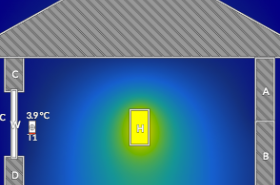 Where Is the Most Heat Lost?
Where Is the Most Heat Lost?
Use movable thermometers to discover where a house has poor insulation.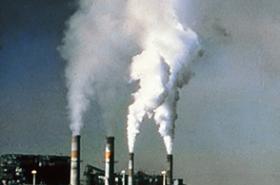 Will the Air Be Clean Enough to Breathe?
Will the Air Be Clean Enough to Breathe?
With more of the world becoming industrialized, will the air be clean enough to breathe?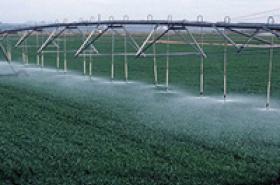 Will There Be Enough Fresh Water?
Will There Be Enough Fresh Water?
As the human population has grown, water use has increased. Explore water movement and predict water availability.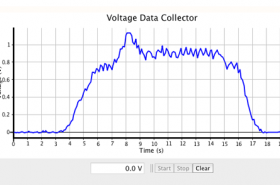 Wind Generator
Wind Generator
Build a wind turbine and test different blade designs to generate electricity.
About the Next Generation Science Standards
 You can also download our
You can also download our
NGSS “fortune tellers” (PDF) for another fun way to find resources available for different paths.
The Next Generation Science Standards provide a framework and examples for STEM learning. Grounded in the National Academy of Science’s thoughtful Framework for K-12 Science Education, these new K-12 science standards have been developed to provide students an internationally benchmarked science education, and signify a new direction for STEM education. They elevate the importance of Earth science, present engineering education as coequal with science education for the first time and emphasize a key set of Scientific and Engineering Practices and Crosscutting Concepts that should buttress all learning in these disciplines.
The NGSS hold the potential for helping focus the current national concern for improving STEM education. They will undoubtedly help bring clarity and unity to the patchwork of state standards developed throughout the standards movement in the past decades. As this occurs, innovative educational technology will be a critical component in this STEM education revolution.
The Concord Consortium and the NGSS
Our NGSS Pathfinder provides numerous examples of how the NGSS—and especially its Practices and Crosscutting Concepts—are central to our work in STEM education. Over nearly two decades, we’ve been demonstrating how technology can make complex concepts more approachable, underscore important crosscutting ideas and engage students in the practices of science and engineering.
Using computational models and probe-based activities, elementary students can watch biological evolution, middle school students can analyze and interpret data to understand the genetic basis of inheritance and high school and college students can argue from evidence in discussing interactions between molecules. With these technology-supported activities, students can engage in doing real science as they plan and carry out investigations, use models, analyze data and design solutions. Students also gain wide experience with crosscutting concepts—from scales in space and time to energy and systems—across domains in science, math and engineering.
More about the NGSS
- Next Generation Science Standards Website
- Improving STEM Education with Next Generation Science Standards
- Meet NGSS with Concord Consortium Activities
- MW and the New Science Standards
- Next Generation Science Assessment project
- Using Technology to Enhance NGSS-Aligned Assessment Tasks for Classroom Formative Use
